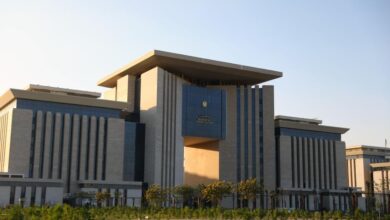NAIROBI/DADAAB, Kenya – Hadija Abdi and her two remaining children wait anxiously among a cluster of famished Somalis at the reception center of eastern Kenya’s sprawling Dadaab refugee camp.
Aid workers nourish Abdi’s infant son through an intravenous drip as the 48-year-old widow lies beside him. A nurse with the non-profit Doctors Without Borders (MSF) gives Abdi’s daughter water periodically, warning that the young girl may die from dehydration if she doesn’t replenish her body thoroughly and avoid exposure to the sun.
Abdi and her children, along with all those at the center, recently concluded the harrowing journey of traversing hundreds of kilometers through the arid Somali heartland in search of food. But Abdi is not rejoicing at the much-needed relief. The episode exacted an immeasurable price.
“My son was so weak, he could not even walk. We had food but he was ill,” says Abdi, who arrived at the camp five days ago. “He suffered from diarrhea and he was not able to swallow his food. Every time he tried, he vomited. We had to leave him behind.”
The ten-year-old boy was buried along the road in the desolate frontier of Bakool, a south-central region bordering Kenya that UN officials recently declared famine-struck. The widow’s 8-year-old daughter died the day the family arrived at Dadaab. Her grave rests on the outskirts of the camp.
Abdi’s children are two of an estimated 30,000 young Somalis that have succumbed to the country’s punishing conditions over the past three months. Analysts say nearly 650,000 Somali children are currently malnourished.
The deaths of Abdi’s children contribute to a trend rising at alarming rates in recent weeks. As the famine endures and Somalis are continually weakened, analysts say mothers are being forced to abandon children both dead and alive along the journey.
"We have heard very sad stories of women having to abandon their children along the way because they were too weak to carry them," says Andreas Needham, public relations officer for UNHCR in Nairobi.
Since Somalia erupted in civil war in the early 1990s, the country has grown to symbolize the modern “failed state”. The political landscape is fragmented and dysfunctional and infrastructural development ranks at the lowest global standards.
The Western-backed interim government has reportedly ousted al-Shabab militants, an Al-Qaeda-linked Islamist group, from former strongholds in the capital, Mogadishu, but the country remains wracked by conflict. Aid organizations say pervasive violence and insecurity turned Somalia’s worst drought in 60 years into famine, spurring a mass exodus from the embattled country.
"As they flee Somalia to safety, women and children are passing through areas where armed groups and bandits roam, only to arrive in crowded and potentially dangerous camps,” says Janusz Czerniejewski, head of the Kenya and Somalia branch of non-profit INTERSOS in Nairobi. “The protection aspects of this crisis are acute and life threatening.”
In the past week alone, more than 5000 refugees seeking food, shelter and medical treatment have arrived successfully at Dadaab. Nearly 400,000 Somalis now inhabit the camp originally built to accommodate almost one-fifth that amount. But it’s the Somali children, aid workers say, that suffer the most profound hardship.
"I believe it is the children's famine, because the ones who are the weakest are the children and those are the ones we're seeing are the least likely to make it," head of the World Food Program Josette Sheeran recently told Reuters news agency.
And with Dadaab and camps within Somalia inundated with displaced people, the relief effort is severely over-burdened and medical support for children remains insufficient. The capacity to provide immediate medical treatment for arrivals is not near an optimal standard, relief workers say.
“Sometimes, we can’t do anything…it’s just too late. We try what we can but, as you can see, everyone is in need of medical attention, everyone’s state is critical,” says MSF social worker Linda Kathure.
In recent days and weeks, UNICEF, the UN’s child relief fund, has dispatched medical units to the camp’s outskirts in order to expedite the treatment process. UNICEF aid workers say the mobile units will save countless lives.
"The positioning of health and nutritional supplies close to the border will save children's lives that might otherwise have been lost on the long journey to Dadaab,” says UNICEF representative in Kenya, Olivia Yambi.
MSF is currently treating thousands of Somali children for malnutrition in Dadaab. The non-profit is administering treatment to 130 children facing imminent death in its inpatient therapeutic feeding center. Nearly 2500 acutely malnourished children are treated in MSF’s outpatient program and more than 5000 moderately malnourished Somali children are enrolled in the aid organization’s supplementary feeding program.
Although many arrive malnourished, inadequate food provisions are increasing the hardship of tens of thousands of children currently housed in the camp. UNICEF estimates US$315 million is needed over the next six months to shore up nourishment emergency and preventative assistance operations currently underway.
Following a recent nutrition screening by MSF on the outskirts of one Dadaab’s branches, organizational personnel found that 37.7 percent of children between six months and five years old suffer from acute malnutrition. Nearly 50 percent of children between five and 10 years old in the camp are malnourished, the screening revealed.
But the relief community is making substantial headway in certain areas. According to recent UNICEF reports, over 100,000 children have been vaccinated for measles and polio in the camp. Emergency coordinator for UNICEF in Dadaab, Ibrahim Conteh, says infectious spread is a perilous threat.
"We are acting now because these diseases can spread very quickly in overcrowded conditions like we have now in the camps,” he says.




